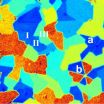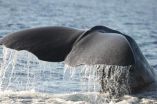(Press-News.org) Excessive regulations are consuming scientists' time and wasting taxpayer dollars, says a report released today by the National Science Board (NSB), the policymaking body of the National Science Foundation and advisor to Congress and the President.
"Regulation and oversight of research are needed to ensure accountability, transparency and safety," said Arthur Bienenstock, chair of the NSB task force that examined the issue. "But excessive and ineffective requirements take scientists away from the bench unnecessarily and divert taxpayer dollars from research to superfluous grant administration. This is a real problem, particularly in the current budget climate."
Thousands of federally funded scientists responded to NSB's request to identify requirements they believe unnecessarily increase their administrative workload. The responses raised concerns related to financial management, grant proposal preparation, reporting, personnel management, and institutional review boards and animal care and use committees (IRBs and IACUCs).
Scientists and institutions pinpointed regulations they believe are ineffective or inappropriately applied to research, and audit and compliance activities that take away research time and result in university over-regulation.
"Escalating compliance requirements and inconsistent audit practices directly impact scientists and the time they have to perform research and train students and staff," said Kelvin Droegemeier, NSB vice chairman and a member of the task force.
The report, Reducing Investigators' Administrative Workload for Federally Funded Research, recommends limiting proposal requirements to those essential to evaluate merit; keeping reporting focused on outcomes; and automating payroll certification for effort reporting. The NSB further recommends an evaluation of animal research, conflict of interest, and safety and security requirements, and encourages universities to review their IRB and IACUC processes to achieve rapid approval of protocols.
The report cites a continued lack of consistency in requirements within and between federal agencies and recommends the creation of a permanent high-level, inter-agency, inter-sector committee. The committee would address the recommendations in the NSB and other reports; identify and prioritize, with stakeholder engagement, additional opportunities to streamline and harmonize regulations; and, help standardize the implementation of new requirements affecting investigators and institutions.
"Streamlining research regulations and making requirements more consistent across federal agencies is in the best interest of scientists and taxpayers," said Bienenstock.
INFORMATION:
About the National Science Board
The NSB is the policymaking body for the National Science Foundation. NSB also advises the President and Congress on science and engineering policy issues. The Board's 24 members are drawn primarily from universities and industry and represent a variety of science and engineering disciplines. Selected for their eminence in research, education or public service and records of distinguished service, Board members serve six-year terms. NSF's Director is an ex officio 25th member of the Board. Visit NSB's website for more information.
Excessive regulations turning scientists into bureaucrats
Increasing administrative requirements waste researcher time and taxpayer money
2014-05-01
ELSE PRESS RELEASES FROM THIS DATE:
Electronic nose sniffs out prostate cancer using urine samples
2014-05-01
New York, NY, May 1, 2014 – We may soon be able to make easy and early diagnoses of prostate cancer by smell. Investigators in Finland have established that a novel noninvasive technique can detect prostate cancer using an electronic nose. In a proof of principle study, the eNose successfully discriminated between prostate cancer and benign prostatic hyperplasia (BPH) by "sniffing" urine headspace (the space directly above the urine sample). Results using the eNose are comparable to testing prostate specific antigen (PSA), reports the Journal of Urology®.
Prostate cancer ...
Oral Cancer linked to human papillomavirus: No increased HPV risk for long-term partners
2014-05-01
Partners of patients diagnosed with human papilloma virus (HPV)-positive oropharyngeal cancer (OPC) were no more likely to test positive for oral HPV infection than people in the general population, according to a study published in the April 28 online edition of the Journal of Clinical Oncology. The findings should lessen anxiety that OPC cancer is contagious, at least among long-term partners, and confirms that couples who have been together for several years do not need to change their intimacy or sexual behavior because of the cancer diagnosis.
HPV infection is common ...
Study in Science finds missing piece of biogeochemical puzzle in aquifers
2014-05-01
A study published today in Science by researchers from the U.S. Department of Energy's Argonne National Laboratory may dramatically shift our understanding of the complex dance of microbes and minerals that takes place in aquifers deep underground. This dance affects groundwater quality, the fate of contaminants in the ground and the emerging science of carbon sequestration.
Deep underground, microbes don't have much access to oxygen. So they have evolved ways to breathe other elements, including solid minerals like iron and sulfur.
The part that interests scientists ...
Increased drought portends lower future Midwest crop yields
2014-05-01
Increasingly harsh drought conditions in the U.S. Midwest's Corn Belt may take a serious toll on corn and soybean yields over the next half-century, according to research published today in the journal Science.
Corn yields could drop by 15 to 30 percent, according to the paper's estimates; soybean yield losses would be less severe.
North Carolina State University's Roderick Rejesus, associate professor of agricultural and resource economics and a co-author of the Science paper, says that corn and soybean yields show increasing sensitivity to drought, with yields ...
Tapah downgrades to a depression
2014-05-01
Tapah was downgraded from a tropical storm to a tropical depression and is located 239 nautical miles southeast of Iwo To. Tapah rapidly dissipated due to the effected of strong vertical windshear from the west and a sharp decreased in sea surface temperature. The storm is currently tracking northwest at 10 knots per hour and is expected to recurve to the northeast and accelerate. Maximum wave height is currently 10 feet. The storm will be monitored for signs of regeneration.
NASA captured this image of the storm with the Moderate Resolution Imaging Spectroradiometer ...
Researchers link age, general health and antidepressant use with eye disorders
2014-05-01
Abnormal binocular vision, which involves the way eyes work together as a team, increases dramatically as we age, according to research from the University of Waterloo. The study also found a correlation between this condition, general health and antidepressant use.
As many as 27 per cent of adults in their sixties have an actual binocular vision or eye movement disorder. That number rises to 38 per cent for those over age 80. About 20 per cent of the general population suffers from a binocular vision disorder, which affects depth perception and therefore may increase ...
New Hass avocado research presented at American Society for Nutrition Scientific Sessions
2014-05-01
May 1, 2014 [San Diego, CA] – New research exploring the potential effects of Hass avocado consumption on emerging cardiovascular disease (CVD) risk factors was presented at the American Society for Nutrition Scientific Sessions and Annual Meeting at Experimental Biology 2014 (EB).
Li Wang, PhD Candidate, Pennsylvania State University, presented, "Avocado consumption decreases LDL particle number and small, dense LDL cholesterol in overweight and obese subjects," at the Dietary Bioactive Components: Cardiovascular Effects of Dietary Bioactive Components session on Saturday ...
Edgy look at 2-D molybdenum disulfide
2014-05-01
The drive to develop ultrasmall and ultrafast electronic devices using a single atomic layer of semiconductors, such as transition metal dichalcogenides, has received a significant boost. Researchers with the U.S. Department of Energy (DOE)'s Lawrence Berkeley National Laboratory (Berkeley Lab) have recorded the first observations of a strong nonlinear optical resonance along the edges of a single layer of molybdenum disulfide. The existence of these edge states is key to the use of molybdenum disulfide in nanoelectronics, as well as a catalyst for the hydrogen evolution ...
Some Ohio butterflies threatened by rising temperatures
2014-05-01
The combined heat from climate change and urbanization is likely to reduce the number of eastern swallowtails and other native butterflies in Ohio and promote the spread of invasive relatives, a new study led by a Case Western Reserve University researcher shows.
Among 20 species monitored by the Ohio Lepidopterists society, eight showed significant delays in important early lifecycle events when the two factors were combined—a surprising response that may render the eight unfit for parts of the state where they now thrive.
Butterflies serve as important indicator ...
Whales hear us more than we realize
2014-05-01
RICHLAND, Wash. – Killer whales and other marine mammals likely hear sonar signals more than we've known.
That's because commercially available sonar systems, which are designed to create signals beyond the range of hearing of such animals, also emit signals known to be within their hearing range, scientists have discovered.
The sound is likely very soft and audible only when the animals are within a few hundred meters of the source, say the authors of a new study. The signals would not cause any actual tissue damage, but it's possible that they affect the behavior ...
LAST 30 PRESS RELEASES:
Innovative techniques enable Italy’s first imaging of individual trapped atoms
KIER successfully develops Korea-made “calibration thermoelectric module” for measuring thermoelectric device performance
Diversifying US Midwest farming for stability and resilience
Emphasizing immigrants’ deservingness shifts attitudes
Japanese eels, climate change, and river temperature
Pusan National University researchers discover faster, smarter heat treatment for lightweight magnesium metals
China’s 2024 Gastroenterology Report: marked progress in endoscopy quality and disease management
Pusan National University researchers uncover scalable method for ultrahigh-resolution quantum dot displays
Researchers use robotics to find potential new antibiotic among hundreds of metal complexes
Gut bacteria changes at the earliest stages of inflammatory bowel disease
Scientists develop new way to “listen in” on the brain’s hidden language
Brain research: “Pulse generators” grow and shrink as memories are formed
For teens, any cannabis use may have impact on emotional health, academic performance
School meals could unlock major gains for human and planetary health
Menopause hormone therapy does not appear to impact dementia risk
Signature patterns of brain activity may help predict recovery from traumatic brain injury
Dresden study uncovers new key mechanism in cancer cells
New species are now being discovered faster than ever before, study suggests
Cannabis-based products show limited short-term benefit for chronic pain, with increased risk of adverse effects
Cannabis products with more THC slightly reduce pain but cause more side effects
Clearing the brain of aging cells could aid epilepsy and reduce seizures
Brain injuries linked with potential risk of suicide, new study finds
New technique lights up where drugs go in the body, cell by cell
New study finds movement of fishing fleets can reveal shifts in marine ecosystems
Embargoed: New evidence points to potential treatment for vascular dementia
Study uncovers disrupted brain balance in alcohol dependence
Working in groups can help Republicans and Democrats agree on controversial content moderation online
Structural findings reveal how distinct GPCR ligands create different levels of activation
Anything-goes “anyons” may be at the root of surprising quantum experiments
UC review: Maximizing workplace opportunity for veterans
[Press-News.org] Excessive regulations turning scientists into bureaucratsIncreasing administrative requirements waste researcher time and taxpayer money



